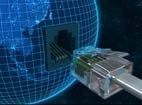The media has discussed the promise of the Internet of Things (IoT) at great lengths. The bottom line is pretty simple: Slapping computer and communications functionality into and/or onto everything offers a revolution in how things are done.
Commentators who have been encouraged, no doubt, by the marketing departments of the companies that stand to benefit, perhaps haven’t considered the difficulty of actually making the IoT happen.
It is quite a task. Sasa Marinkovic, the head of technical marketing for AMD, uses a post at InformationWeek to set out the challenges and one road to a solution. The bottom line is that the trillions of automated machine-to-machine (M2M) data exchanges that the IoT is built upon won’t occur unless highly specialized and standardized ways of doing so are developed. Marinkovic says:
For this to happen, however, communication must take place on multiple levels, from the hardware that comprises the physical underpinnings of the IoT — the internal computing parts inside each device — to the communications protocols and methodologies that links from device to device and from the device to the cloud and back.
Marinkovic goes on to describe an effort at tackling this issue. The Heterogeneous System Architecture Foundation, which was formed in June of 2012, works to create a “more efficient approach to computer architecture,” according to Marinkovic.
Marinkovic only hints at a key lay person’s question: How does unifying the internal operations of computing devices make the IoT more feasible? The indications are that in IoT/M2M environments, computing happens so fast and furiously that having a universe of devices that operate in the same manner enables large scale streamlining and easier transfer of data.
The Industry Internet Consortium also is tackling the sticky issue of making the IoT actually work. It certainly has the heavyweights on its side: Founding members include IBM, Cisco, Intel, GE and AT&T. It will use existing and new use cases and real-world applications to try to influence global standards and take other steps aimed at promoting wide-scale, IoT-level interoperability.
At PCWorld, Stephen Lawson points out that the organization will work on facilitating the IoT in the industrial sector. It is a huge sector, but only one part of the even bigger IoT arena:
The combination of IT and OT (operational technology) can make a wide range of industries more efficient and let companies tap into vast amounts of data generated by equipment in the field, IoT proponents say. Among other things, such streams of data can help to diagnose problems and show trends over time. But to make this a reality on a large scale, different types of industrial and IT gear will need to work together so enterprises can mix vendors and build systems more easily, the IIC members said.
It seems that The Heterogeneous System Architecture Foundation and the Industry Internet Consortium have two takes on the same basic challenge: The amount of data that needs to flow for the IoT to reach its potential is mind boggling, even compared to the already staggering loads carried by the Internet today. Much work must be done to pull off the IoT the way it should be. In any case, it’s good to know that two organizations are on the case.



